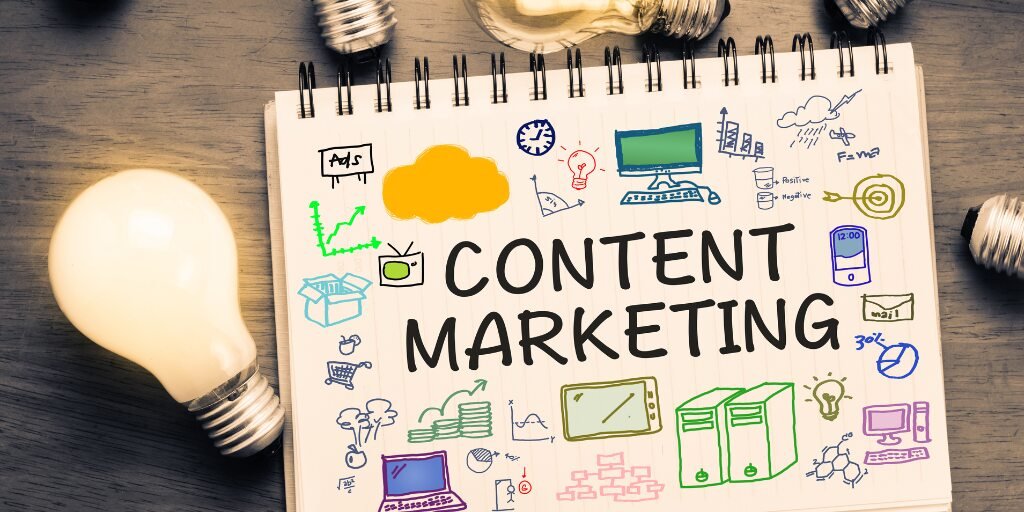Employee retention is a critical issue for businesses of all sizes. Losing valuable team members can be costly and disruptive. Traditional methods of retaining employees often fall short due to their reactive nature. However, with the rise of AI-driven HR analytics, companies now have powerful tools to predict and prevent employee turnover. This article explores how AI is transforming HR practices, making it easier to keep your best talent and foster a more engaged and productive workforce.
Understanding AI-Driven HR Analytics
The Foundation of AI-Driven HR Analytics
AI-driven HR analytics represents a fundamental shift in how companies approach human resource management. For startup founders, leveraging these tools effectively can mean the difference between retaining top talent and experiencing high turnover.
Understanding the foundational elements of AI-driven HR analytics is crucial for implementing strategies that align with your business goals and foster a productive workforce.
At its core, AI-driven HR analytics combines machine learning, data mining, and predictive modeling to analyze vast amounts of employee data. This data-driven approach provides actionable insights that traditional HR methods often miss. Startup founders must invest in the right technologies and cultivate a data-centric mindset within their organizations to fully harness the power of AI-driven HR analytics.
Strategic Data Collection
The effectiveness of AI-driven HR analytics hinges on the quality and breadth of data collected. For startups, it is essential to identify which data points are most relevant to employee retention and performance.
Key data sources include employee surveys, performance reviews, attendance records, training and development participation, and even communication patterns within the organization.
Implement a robust HR information system (HRIS) that seamlessly integrates various data sources. Ensure that your data collection methods are transparent and comply with privacy regulations.
Regularly update and clean your data to maintain its accuracy. High-quality data is the backbone of effective AI-driven HR analytics and ensures that the insights generated are reliable and actionable.
Building Predictive Models

Building predictive models is a critical step in leveraging AI-driven HR analytics. These models analyze historical data to identify patterns and predict future outcomes, such as employee turnover risk. For startup founders, the goal is to create models that are tailored to the specific dynamics of their organization.
Collaborate with data scientists or leverage AI platforms that offer user-friendly tools for building predictive models.
Start by defining clear objectives for your models, such as predicting turnover within the next six months or identifying factors that contribute most to employee satisfaction. Continuously refine your models by incorporating new data and feedback, ensuring they remain accurate and relevant over time.
Implementing AI Solutions
Implementing AI-driven HR analytics solutions requires a strategic approach that involves cross-functional collaboration. Startup founders should work closely with their HR teams to ensure that the AI tools are integrated smoothly into existing workflows. This collaboration helps in aligning AI initiatives with broader business objectives and addressing any resistance to change.
Begin with pilot projects to test the efficacy of your AI solutions. For example, you might start by using predictive analytics to identify employees at risk of leaving and then implement targeted retention strategies for this group. Evaluate the outcomes of these pilot projects to fine-tune your approach before scaling up.
Training and Development
For AI-driven HR analytics to be effective, HR professionals and managers need to understand how to interpret and act on the insights generated. Invest in training programs that equip your team with the skills to leverage AI tools effectively. This includes understanding data analysis, interpreting predictive models, and making data-driven decisions.
Encourage a culture of continuous learning within your organization. Provide access to resources such as online courses, workshops, and seminars on AI and data analytics. By empowering your HR team with the necessary knowledge and skills, you ensure that your AI initiatives are implemented successfully and deliver tangible results.
Aligning AI with Business Goals
AI-driven HR analytics should be aligned with your overall business goals. For startup founders, this means integrating AI insights into strategic decision-making processes. Use the data generated by AI tools to inform decisions on hiring, talent development, and organizational growth.
Set clear KPIs to measure the success of your AI initiatives. These could include metrics such as reduction in turnover rates, improvement in employee engagement scores, or increased participation in training programs. Regularly review these KPIs to assess the impact of your AI-driven HR strategies and make necessary adjustments.
Ensuring Ethical Use of AI
As you implement AI-driven HR analytics, it’s important to address ethical considerations. Ensure that your use of AI respects employee privacy and complies with relevant regulations. Be transparent with your employees about how their data is being used and involve them in discussions about the benefits and implications of AI initiatives.
Develop policies and guidelines that govern the ethical use of AI in HR. This includes addressing issues such as data privacy, bias in predictive models, and the potential impact on employee morale. By prioritizing ethics, you build trust with your employees and create a positive environment that supports the successful adoption of AI-driven HR analytics.
Continuous Improvement and Adaptation
AI-driven HR analytics is not a one-time implementation but an ongoing process of improvement and adaptation. Regularly evaluate the performance of your AI tools and their impact on employee retention. Gather feedback from HR professionals and employees to identify areas for improvement.
Stay informed about advancements in AI and data analytics to ensure that your startup remains at the forefront of innovation. Adapt your strategies based on emerging trends and new insights. By maintaining a commitment to continuous improvement, you ensure that your AI-driven HR analytics initiatives remain effective and relevant.
Predictive Analytics in HR
Developing a Comprehensive Data Strategy
For startup founders, developing a comprehensive data strategy is the foundation for effective predictive analytics in HR. This strategy should outline how data will be collected, stored, and analyzed. Identify the key data points that impact employee retention, such as performance metrics, engagement scores, feedback from exit interviews, and external factors like industry trends.
Invest in a robust HRIS (Human Resources Information System) that can integrate various data sources seamlessly. Ensure that your data strategy includes regular updates and maintenance of the data to keep it relevant and accurate. By establishing a strong data infrastructure, you set the stage for leveraging predictive analytics to its fullest potential.
Implementing Continuous Monitoring
Predictive analytics in HR is most effective when it is continuous rather than a one-time analysis. Implement systems that continuously monitor and analyze employee data in real-time. This allows for the early detection of potential issues and timely interventions.
For example, set up dashboards that track key indicators such as changes in engagement levels, frequency of absenteeism, and shifts in performance ratings. These real-time insights enable your HR team to act swiftly when signs of dissatisfaction or disengagement appear, reducing the risk of turnover.
Customizing Predictive Models
Each organization is unique, and predictive models should be customized to reflect this uniqueness. Startup founders should work closely with data scientists or utilize AI platforms that allow for customization. Tailor predictive models to account for the specific dynamics of your organization, such as your company culture, industry-specific challenges, and the characteristics of your workforce.
For instance, if your startup operates in a highly competitive tech industry, your predictive models might place a greater emphasis on tracking market salary trends and employee skills development. Customizing your predictive models ensures that the insights generated are highly relevant and actionable for your specific context.
Utilizing Sentiment Analysis
Sentiment analysis is a powerful tool in predictive analytics that can provide deeper insights into employee morale and engagement. By analyzing text data from emails, internal communications, and employee feedback, sentiment analysis can detect subtle changes in tone and emotion that might indicate dissatisfaction or disengagement.
For startup founders, integrating sentiment analysis into your HR analytics can uncover issues that are not immediately apparent from quantitative data alone. This qualitative insight allows for a more nuanced understanding of employee sentiment, enabling more effective and targeted retention strategies.
Scenario Planning and Simulation

Predictive analytics can also be used for scenario planning and simulation, helping startup founders prepare for various future possibilities. By creating different scenarios based on predictive models, you can evaluate the potential impact of various factors on employee retention.
For example, simulate the effects of a major organizational change, such as a shift to remote work or a restructuring of teams. Analyze how these changes might affect employee morale and turnover rates. Scenario planning helps you anticipate challenges and develop proactive strategies to mitigate their impact, ensuring that you are prepared for various eventualities.
Linking Predictive Insights to Action Plans
Predictive analytics is only valuable if it leads to actionable insights. Startup founders should establish a clear process for translating predictive insights into concrete action plans. This involves setting up protocols for regular review meetings where HR teams discuss the insights generated by predictive models and decide on the appropriate interventions.
For instance, if predictive analytics identifies a group of employees at high risk of leaving, develop a targeted retention plan that includes measures such as career development opportunities, mentorship programs, or adjustments to work-life balance.
Ensure that these action plans are implemented promptly and monitored for effectiveness. By linking predictive insights to specific actions, you create a dynamic and responsive HR strategy.
Measuring the Impact of Predictive Interventions
It’s crucial to measure the impact of your predictive interventions to understand their effectiveness and refine your approach. Establish key performance indicators (KPIs) that align with your retention goals, such as reduction in turnover rates, improvement in employee engagement scores, and increased participation in development programs.
Regularly review these KPIs to assess the success of your interventions. Use this data to adjust your predictive models and action plans, ensuring continuous improvement. By measuring the impact of your predictive analytics initiatives, you create a feedback loop that enhances the precision and effectiveness of your retention strategies.
Fostering a Culture of Data-Driven Decision Making
For predictive analytics to be truly effective, it needs to be part of a broader culture of data-driven decision making within your startup. Encourage your HR team and managers to rely on data insights when making decisions about employee retention and development. Provide training and resources to help them understand how to interpret and use predictive data effectively.
Promote transparency and communication about the use of predictive analytics. Share success stories and case studies within your organization to demonstrate the value of data-driven decisions. By fostering a culture that values and utilizes data insights, you enhance the overall effectiveness of your predictive analytics initiatives and drive better outcomes for your employees and your business.

Related: Check out our free tools:

Enhancing Employee Engagement
Measuring Engagement Levels
Employee engagement is a key factor in retention. Engaged employees are more likely to stay with a company and contribute to its success.
AI-driven HR analytics can measure engagement levels through various metrics, such as participation in company events, feedback in surveys, and interaction on internal communication platforms. By regularly monitoring these metrics, HR can gauge the overall engagement and take steps to improve it.
Improving Work-Life Balance
Work-life balance is crucial for employee satisfaction and retention. AI can analyze work patterns to identify employees who might be at risk of burnout.
For instance, if an employee consistently works late hours or responds to emails over the weekend, AI can flag this behavior as a potential issue. HR can then take steps to ensure these employees are not overworked, such as adjusting workloads or promoting flexible working arrangements.
Fostering a Positive Work Environment
A positive work environment is essential for keeping employees happy and engaged. AI-driven HR analytics can help identify areas where the company culture might be falling short.
For example, analyzing feedback from employee surveys can reveal common complaints or suggestions for improvement. Addressing these issues can help create a more supportive and inclusive workplace, boosting morale and retention.
Recognizing and Rewarding Employees
Recognition and rewards are powerful tools for enhancing employee engagement. AI can help identify employees who consistently perform well and deserve recognition.
By analyzing performance data, AI can highlight achievements that might otherwise go unnoticed. Implementing a structured recognition program based on these insights can motivate employees and reinforce positive behavior, contributing to higher retention rates.
Personalized Development and Career Growth
Creating Tailored Development Plans
One of the most effective ways to retain employees is by supporting their professional growth. AI-driven HR analytics can create personalized development plans by analyzing each employee’s skills, performance data, and career aspirations. This approach ensures that development opportunities align with both the company’s needs and the employee’s goals.
For example, if an employee shows a strong aptitude for leadership but has not had the opportunity to develop these skills, AI can identify this gap. HR can then create a tailored development plan that includes leadership training, mentoring programs, and stretch assignments. Personalized development plans make employees feel valued and invested in, reducing the likelihood of turnover.
Identifying Internal Mobility Opportunities
Promoting from within is a powerful retention strategy. AI can help identify internal mobility opportunities by matching employees’ skills and interests with available positions. By analyzing employee data and job requirements, AI can suggest career paths that align with the employee’s strengths and the company’s needs.
For instance, if an employee in a technical role expresses interest in moving into project management, AI can highlight relevant training programs and upcoming job openings in project management. Facilitating internal mobility not only helps retain talent but also builds a more versatile and motivated workforce.
Continuous Feedback and Performance Management
Regular feedback is essential for employee development and satisfaction. AI-driven HR analytics can enhance performance management by providing continuous, data-driven feedback. This system ensures that employees receive timely and constructive feedback, rather than waiting for annual reviews.
For example, AI can analyze performance metrics and provide real-time feedback on an employee’s progress towards their goals. This ongoing feedback loop helps employees understand their strengths and areas for improvement, fostering a culture of continuous learning and growth. Consistent and meaningful feedback keeps employees engaged and aligned with the company’s objectives.
Leveraging AI for Better Hiring Practices
Predicting Job Fit
Hiring the right people is crucial for retention. AI-driven HR analytics can improve hiring practices by predicting job fit based on candidates’ skills, experiences, and cultural alignment with the company. This predictive capability helps ensure that new hires are not only qualified but also a good match for the company’s environment.
For instance, AI can analyze resumes, cover letters, and interview responses to assess whether a candidate’s values and work style align with the company culture. By hiring individuals who are a good fit, companies can reduce the risk of early turnover and build a more cohesive team.
Reducing Bias in Hiring
Bias in hiring can lead to poor retention rates and a lack of diversity. AI-driven HR analytics can help reduce bias by standardizing the hiring process and focusing on objective criteria. By removing human biases, AI ensures a fairer evaluation of candidates.
For example, AI can analyze job descriptions to identify and remove biased language that might deter certain groups from applying. During the hiring process, AI can evaluate candidates based on their skills and experiences rather than subjective impressions. This approach promotes diversity and inclusion, which are key factors in employee satisfaction and retention.
Enhancing Onboarding Experiences
A strong onboarding experience sets the tone for an employee’s journey with the company. AI-driven HR analytics can enhance onboarding by personalizing the process and ensuring new hires have the support they need from day one.
For instance, AI can tailor onboarding programs based on the new hire’s role, skills, and previous experience. Personalized onboarding might include specific training modules, introductions to key team members, and resources relevant to their job functions. A well-structured and supportive onboarding experience helps new employees feel welcome and prepared, increasing their likelihood of staying with the company.
Data-Driven Decision Making
Analyzing Workforce Trends
AI-driven HR analytics provides valuable insights into workforce trends that can inform strategic decisions. By analyzing data on employee performance, engagement, and turnover, HR leaders can identify patterns and make data-driven decisions to improve retention.
For example, if AI analysis reveals that turnover rates are higher in certain departments or during specific periods, HR can investigate the underlying causes and address them proactively. Understanding workforce trends helps companies implement targeted interventions and measure their effectiveness over time.
Improving Employee Benefits and Compensation

Employee benefits and compensation play a significant role in retention. AI-driven HR analytics can help optimize these programs by analyzing employee preferences and market trends. This ensures that the company’s offerings are competitive and aligned with employees’ needs.
For instance, AI can analyze survey data to understand which benefits employees value most, such as flexible working arrangements, health benefits, or professional development opportunities.
Additionally, AI can benchmark compensation against industry standards to ensure that the company remains competitive. Tailoring benefits and compensation based on data-driven insights helps attract and retain top talent.
Enhancing Organizational Culture
Organizational culture is a major factor in employee retention. AI-driven HR analytics can provide insights into the company culture by analyzing employee feedback, engagement scores, and internal communication patterns. This helps HR leaders understand the strengths and weaknesses of the current culture and implement improvements.
For example, if data analysis shows that employees feel undervalued or disconnected from the company’s mission, HR can develop initiatives to address these issues. This might include recognition programs, team-building activities, or more transparent communication practices. Enhancing the organizational culture creates a more positive and engaging work environment, leading to higher retention rates.
Conclusion
AI-driven HR analytics is revolutionizing the way companies approach employee retention. For startup founders, leveraging these advanced tools can provide a significant competitive edge, helping you retain top talent and build a thriving, engaged workforce.
By understanding the foundational aspects of AI-driven HR analytics, developing a comprehensive data strategy, and implementing continuous monitoring, you can identify at-risk employees early and intervene proactively.
Customizing predictive models to fit your unique organizational dynamics ensures that the insights you gain are relevant and actionable. Utilizing sentiment analysis and scenario planning allows for a deeper understanding of employee sentiment and prepares you for various future scenarios.
Read Next:
- How to Create High-Quality Articles with AI
- AI Writing Tools for Engaging Blog Posts
- Social Media and Tourism: Key Statistics for 2024
- 7 Top AI Tools for Content Creation
- Boost Content Quality Using AI Solutions






















Comments are closed.